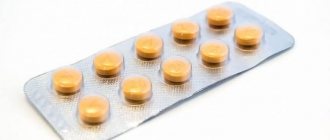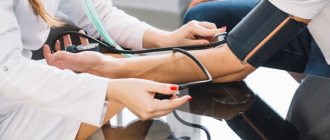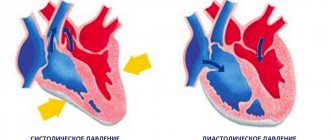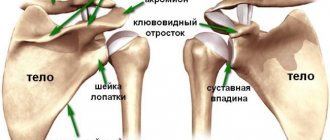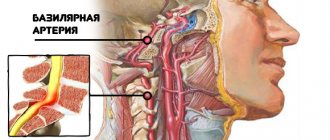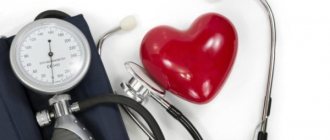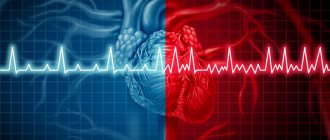A burning sensation in the heart area is a typical symptom of a group of cardiological diseases: from coronary insufficiency of varying severity to defects and other disorders. But this is an extremely misleading symptom.
Pathologies of the heart and blood vessels account for no more than 30% of the total number of visits to the doctor.
The remaining situations are associated with endocrine abnormalities, pain syndromes due to disorders of the musculoskeletal system, and other conditions not related to organic abnormalities of the heart.
Instrumental diagnostics puts an end to the issue. Pathologies of cardiac structures are assumed first.
The cost of a mistake will be too high: lost time, health, and sometimes life. Only then can other disorders be diagnosed by exclusion.
The first priority is to contact a cardiologist. After completing the minimum required list of tests, referrals to other specialists are issued, and so on until the cause of discomfort is identified.
Causes of burning in the chest
Food errors
The symptom is often observed with heartburn, which is caused by eating fried, spicy or smoked foods, drinking large amounts of carbonated drinks, strong coffee or tea. A burning sensation in the chest occurs 15-20 minutes after finishing a meal. Unpleasant sensations are usually localized behind the sternum, they spread from the xiphoid process to the throat. Heartburn is accompanied by an unpleasant taste in the mouth and sour belching. Symptoms disappear on their own after 30-60 minutes.
Diseases of the esophagus
Esophageal pathology is the most common factor in the development of burning sensation in the chest. The symptom manifests itself when acidic gastric contents reflux into the esophagus, which is accompanied by damage to the mucous layer. Patients report that the painful symptom appears after eating, intensifies in a supine position, when bending the torso forward. The burning sensation is most intense behind the sternum.
A similar clinical picture is typical for GERD. In addition to these signs, patients complain of belching air or sour, nausea, and bad breath. A burning sensation in the chest is also observed with achalasia cardia. In such cases, in addition to the typical symptoms, the “wet pillow” symptom is noted - regurgitation of the stomach contents occurs during sleep.
Occasionally, a burning sensation is a sign of esophageal varices. At the onset of the disease, the symptoms correspond to esophagitis: a burning sensation in the chest that occurs after finishing a meal, nausea and vomiting, deterioration of health when bending over and in a lying position. After physical exertion or overeating, burning pain in the chest intensifies, often accompanied by bleeding from pathologically altered veins. Vomiting of blood, weakness and pallor, and disturbances of consciousness are noted.
Diaphragmatic hernia
A hiatal hernia is characterized by a burning sensation in the retrosternal region, which spreads along the esophagus and radiates to the interscapular region. Discomfort begins suddenly. It is usually preceded by a coughing attack, straining, and physical activity. The intensity of the symptom decreases after belching. vomiting. When the hernial sac is strangulated, constant burning pain appears in the chest, which is combined with shortness of breath, decreased blood pressure, and tachycardia.
Burning in the chest
Cardiac ischemia
In middle-aged and elderly people, a burning sensation in the chest is usually caused by cardiac pathology. Burning pain on the left side and behind the sternum occurs during an attack of angina pectoris. The symptom is provoked by emotional shock and fast walking. At the onset of paroxysm, the person stops, sits down, and takes the most motionless position. To stop the burning sensation, use nitroglycerin, which eliminates chest discomfort in 5-10 minutes.
Severe burning pain that lasts 20 minutes or more indicates the development of acute coronary syndrome - myocardial infarction or unstable angina. In this case, the burning sensation spreads across the chest area, radiates to the scapula, left arm and collarbone, and is combined with rapid heartbeat, a drop in blood pressure, and cold sweat. Patients feel dizzy and faint, and often experience a panicky fear of death.
Respiratory diseases
Diseases of the bronchopulmonary system also manifest as burning pain in the chest. They are more characterized by unilateral discomfort, which corresponds to the localization of the pathological process. The burning sensation occurs against the background of intoxication syndrome: increased body temperature, body aches, headache. The main respiratory causes of an unpleasant feeling in the chest:
- Bronchitis.
With inflammation of the bronchi, the burning sensation is most often located in the middle of the chest, accompanied by rawness behind the sternum. The discomfort is noticeably worse when coughing. Burning pain persists for about 10-14 days, weakening as the frequency of coughing attacks decreases. - Pleurisy.
Intense burning in one half of the chest is typical for fibrinous inflammation of the pleura. The painful symptoms are aggravated by bending the body in the opposite direction, taking deep breaths, laughing or coughing. To relieve pain, a person lies on his side and tries not to move. - Hemoptysis.
The pathology is manifested by a painful paroxysm of cough with the development of a strong burning sensation in the chest. The sputum contains visible impurities of blood - from several streaks to numerous clots, indicating pulmonary hemorrhage.
Intercostal neuralgia
When the nerves are damaged, the patient feels bouts of burning, which are localized on one side of the chest. Discomfortable sensations begin immediately or spread in waves along the intercostal spaces from the spine to the sternum. The burning pains are very strong, they force the person to freeze and hold their breath so as not to aggravate the discomfort. The paroxysm ends after 3-5 minutes.
Panic disorder
During an attack, patients often experience a painful burning sensation throughout the chest, which is accompanied by a feeling of lack of air and the inability to swallow. An unpleasant symptom is complemented by tachycardia, interruptions in heart function, chills or a feeling of heat. Among mental manifestations, uncontrollable fear and anxiety predominate. A panic attack lasts on average up to 10 minutes.
When should you see a doctor?
Seeking medical help is an important issue on which a person’s life may depend. It is better not to wait until the pain reaches its peak, but to immediately call an ambulance.
Even if pain does not initially seem like a serious symptom, it is better to be safe than sorry. However, some features of pain may indicate that acute myocardial infarction and other severe pathologies are unlikely.
Signs of a “relatively safe” variant of heart pain:
- the pain is stabbing in nature and lasts several seconds - most likely the cause of the symptom is overexertion or short-term dysfunction of the heart;
- it becomes easier during movements - in case of heart disease, pain intensifies with exertion;
- pain is associated with breathing - in acute heart diseases, shortness of breath may occur, but pain when inhaling, rather, indicates pathologies of the pulmonary system.
You should definitely not delay seeking medical help if:
- acute unbearable pain with a characteristic spread to the left shoulder blade lasting longer than 5 minutes;
- pressing pain in the heart for 30 minutes or longer;
- a sharp increase or decrease in pressure;
- shortness of breath or difficulty breathing;
- loss of consciousness;
- repeated episode of chest pain.
In any of these conditions, you must immediately call an ambulance - the wait can cost not only your health, but even your life.
Acute pain in the heart is an indication to immediately consult a doctor and get a cardiogram, even at a young age. And after 40 years, both women and men should be especially wary of myocardial infarction. In such situations, it is better to be safe than to waste time and not have time to save the heart.
Diagnostics
The initial examination of the patient is carried out by a therapist, who makes a presumptive diagnosis and refers to a specialized doctor: pulmonologist, gastroenterologist, cardiologist. During a physical examination, the specialist listens to the heart and lungs to detect typical auscultatory changes, and palpates the abdomen to identify gastroenterological pathology. To determine the causes of burning in the chest, the following are used:
- ECG.
Burning pain in the chest is an indication for immediate recording of a cardiogram. An ECG records signs of myocardial ischemia or necrosis, cardiac arrhythmia and conduction disturbances. In the presence of pathological abnormalities, echocardiography is performed to examine the anatomical structure and contractility of the myocardium and assess cardiac output. - Radiography
. An X-ray of the chest is used as a screening method and allows one to detect signs of cardiac or pulmonary diseases, manifested by a burning sensation in the chest. In the image you can see infiltration or decay of the lung tissue, symptoms of pleurisy, changes in the configuration or size of the heart shadow. To clarify the diagnosis, a CT scan of the chest organs is performed. - EFGDS.
A burning sensation in the chest, combined with digestive disorders, requires endoscopic diagnosis. When examining the esophagus, the doctor pays attention to the color of the mucous membrane, its integrity, and the presence of erosions or ulcers. During EGD, the condition of the stomach and duodenum is studied to exclude hyperacid conditions. - Neurological examination
. During the examination, the symmetry and severity of the main reflexes are assessed, muscle tone is checked, and the patient’s vegetative status is studied. Electroneuromyography is recommended among instrumental methods. If the attack resembles a panic attack, consultation with a specialist in psychiatry is required. - Blood tests
. The hemogram reveals leukocytosis during inflammatory processes, and a decrease in red blood cells and hemoglobin during hemoptysis. To quickly diagnose a heart attack, the level of myocardial markers is determined. In a biochemical blood test, they look at the ratio of plasma proteins and the number of acute phase indicators.
Electrocardiography is indicated for burning chest pain
How to help with acute pain in the heart?
It is no coincidence that when pain appears in the heart area, they do not know what to do until the doctor arrives. Call the hotline number +7 (863) 226-18-17 , which is best entered into the phone’s memory in advance. Experienced private medical doctors help in emergency situations and transport the patient to the hospital. Emergency medical care is provided in clinics, hospitals and at home.
Before the doctor arrives, you should stop moving and take a lying position, and be sure to call a specialized ambulance. If your heart hurts, self-medication can end sadly and lead to death.
In case of high or low blood pressure, take the tablet as indicated. The patient is prescribed sedative drops , Corvalol, motherwort, valerian, and nitroglycerin. If the pain has passed, there is no need for nitroglycerin; it is also contraindicated for low blood pressure. You can put validol under your tongue. Treatment of cardiac pathologies is prescribed by a doctor according to indications.
Treatment
Help before diagnosis
Burning and heartburn, which are caused by errors in diet, are easy to prevent: stick to a balanced diet, do not lie down immediately after eating, avoid tight belts and clothes that compress the stomach. Patients with previously diagnosed GERD can take antisecretory and antacid medications prescribed by a doctor to relieve symptoms. Nitrovasodilators are used to quickly help with coronarogenic burning behind the sternum.
Conservative therapy
Treatment for burning in the chest is selected in a differentiated manner, taking into account the underlying disease that provokes the debilitating symptom. Most pathologies require therapy on an outpatient basis, but if acute coronary syndrome is suspected or pulmonary bleeding requires hospitalization of the patient. Treatment regimens include drugs from different pharmacological groups:
- Antisecretory agents
. Medicines from the category of H2-histamine blockers and proton pump inhibitors effectively cope with the burning sensation caused by GERD. Medicines reduce acidity in the stomach, promote the healing of inflammation and erosions of the esophagus, and prevent exacerbations of the disease. - Antianginal drugs
. To reduce myocardial ischemia and reduce the risk of MI, beta-blockers, calcium antagonists, and myotropic antispasmodics are used. They increase the delivery of oxygen to the heart muscle, dilate the coronary vessels, and increase the organ’s resistance to hypoxia. - Antibiotics
. The drugs are used for infectious diseases of the respiratory organs. They are selected empirically and adjusted after receiving the results of the antibiogram. For pleurisy, targeted intrapleural administration of antibacterial agents is indicated. - Anticonvulsants
. Representatives of this group are prescribed for the treatment of resistant forms of neuralgia that are not relieved by conventional analgesics and anti-inflammatory drugs. If necessary, therapy for a burning sensation in the chest of neurological origin is supplemented with antidepressants and tranquilizers.
Panic attacks require qualified psychiatric help. Patients are told about special techniques to control paroxysms. To develop constructive and positive thinking patterns, cognitive behavioral therapy techniques are recommended. Sometimes treatment is supplemented with psychoanalysis, group or family psychotherapy.
Surgery
The intervention of abdominal surgeons is necessary in case of complicated course of diaphragmatic hernia. Surgery for suturing and plastic surgery of the hernial orifice, gastropexy and fundoplication techniques are used. To achieve stable remission, patients with achalasia cardia undergo esophagocardiomyotomy followed by plasty. For hyperacidity refractory to drug therapy, selective proximal vagotomy is prescribed.
In acute coronary syndrome, myocardial revascularization may be required using minimally invasive endovascular angioplasty or coronary artery bypass grafting. In case of bleeding from varicose veins of the esophagus, emergency endoscopic clipping or electrocoagulation of the affected vessel is performed. In case of massive pulmonary hemorrhage, the affected segment or lobe of the lung is removed.
Instrumental studies
In addition to an electrocardiogram (ECG), in case of cardiac pathology, various instrumental diagnostic studies .
- Ultrasound of the abdominal cavity;
- FEGDS examination of the digestive organs;
- Ultrasound of the heart, pulmonary vessels and aorta;
- FVD, examination of external respiration functions;
- Chest X-ray;
- CT, computed tomography;
- MRI, magnetic resonance imaging;
- EchoCG, echocardiography and others.
Prevention and recommendations
If a burning sensation occurs regularly, then this condition can be prevented if you follow certain rules:
- sleep at least 8 hours;
- exclude fast food, fatty and smoked foods, and alcohol from the daily menu. The daily diet must be balanced and fractional with a large amount of fresh fruits, cereals, and dairy products;
- maintain a healthy lifestyle;
- take daily walks;
- carry out preventive examinations;
- timely treatment of various pathologies.
A burning sensation in the chest area is a fairly common symptom indicating malfunctions in the gastrointestinal tract, heart muscle, respiratory organs, and central nervous system. To make the treatment process happen much faster, you should not ignore these symptoms, but urgently contact the appropriate doctor.



